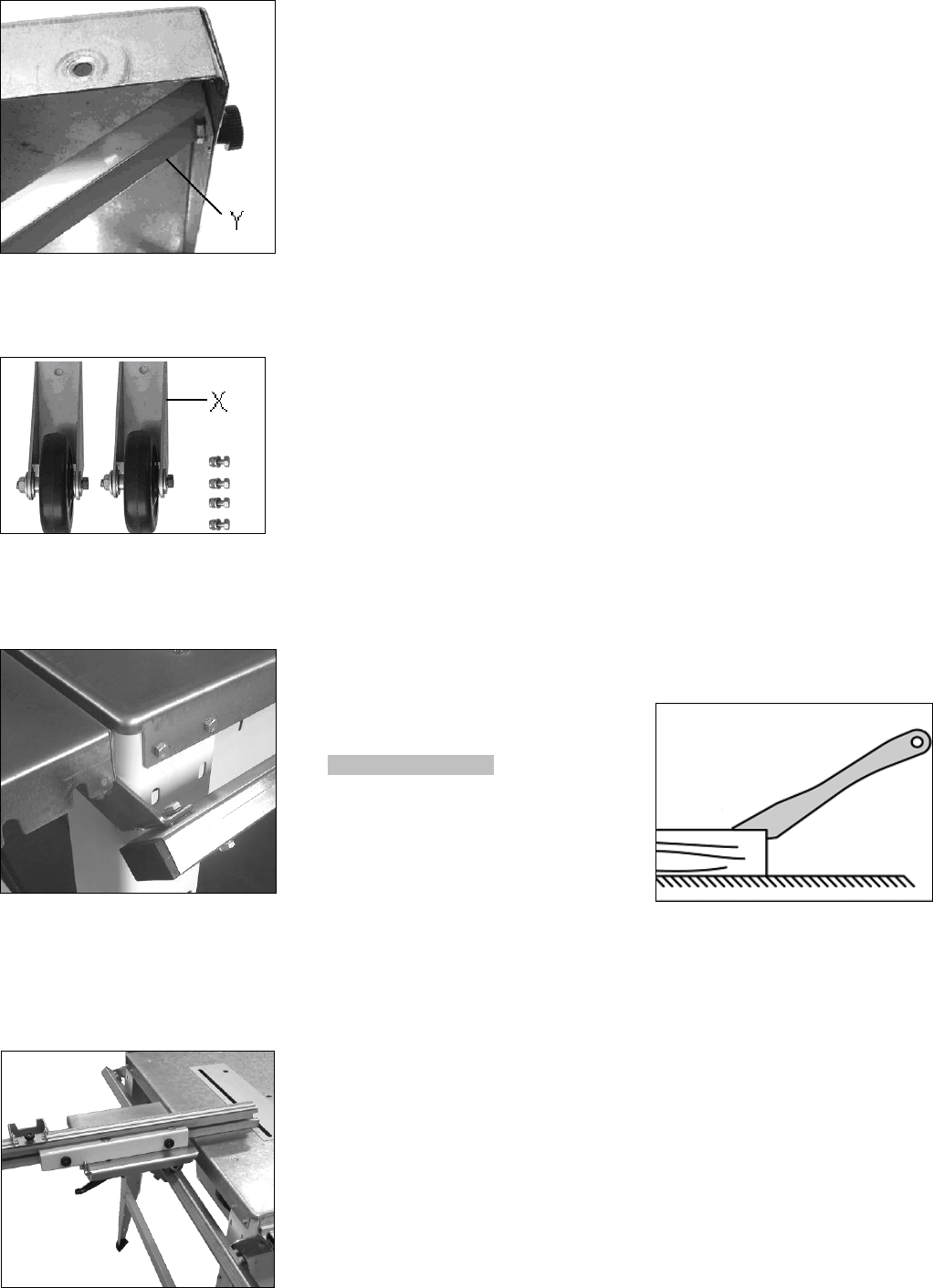
7
Fig 10
Install wheels:
Attach the wheels (X, Fig 11) with 4
bolts and nuts.
F
Fig 11
Install sliding table:
Mount the sliding table guide profile
with the supplied L-brackets (Fig 12)
Fig 12
Install the sliding table.
The sliding table must be aligned to
run parallel to the sawblade and
table surface to be approximately 0,5
mm higher than the machine table
(Fig 13).
Fig 13
5.3 Dust connection
Before initial operation, the machine
must be connected to a dust
extractor. The suction should switch
on automatically when the saw is
switched on.
Attach the connecting hose to the
saw guard and the Y-piece
A 100mm dust collection hose can
be connected.
5.4 Mains connection
Mains connection and any extension
cords used must comply with
applicable regulations.
The mains voltage must comply with
the information on the machine
licence plate.
The mains connection must have a
16A surge-proof fuse.
Only use connection cables marked
H07RN-F
Connections and repairs to the
electrical equipment may only be
carried out by qualified electricians.
5.5 Starting operation
You can start the machine with the
green ON button. The red OFF-
button on the main switch (C, Fig 1)
stops the machine.
6. Machine operation
Correct working position:
In front of the machine standing out
of the line of cutting (danger zone).
Work piece handling:
Hands placed flat on the work piece
outside the cutting area.
Feed the work piece towards the saw
blade in the direction of the saw line.
Push the work piece steadily forward;
complete the cut as a single
movement.
Support long and wide workpieces
with helping roller stands.
Operating hints:
Always observe the safety
instructions and adhere to the
current regulations.
Ensure that the saw blade protective
cover is in the correct position before
you start sawing.
The cutting blade must first reach the
maximum rpm before cutting may
begin.
Attention:
The condition of the blade should be
checked before each machining
process.
Work only with a sharp and flawless
sawblade.
Never use a sawblade rated with a
blade speed lower than the machine.
Use a suitable wedge to prevent
round timber from turning under the
pressure of the cut
Use suitable table extensions and
supporting aids for difficult to handle
workpieces.
Always hold and guide the
workpieces safely during machining.
Do not perform any operation
freehand.
Do not perform any grooving,
tenoning or splitting operations on
this machine.
When ripping narrow workpieces
(width less than 120mm) use a push-
stick (Fig 14) or push-wood.
Fig 14
Make sure that small cut off
workpieces will not be caught and
thrown away by the rising saw blade
teeth.
Remove cut and jammed workpieces
only when motor is turned off and the
machine is at a complete standstill.
Pay particular attention on reducing
the risk of kickback.
The supplied raving knife must
always be used.
Inspect for correct adjustments.
For the authorized use of the
machine observe the appendix A
“safe operation“
(on the last pages of this











